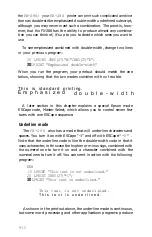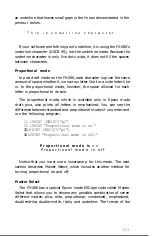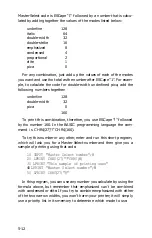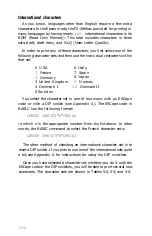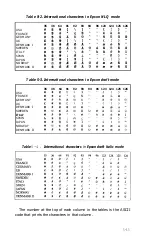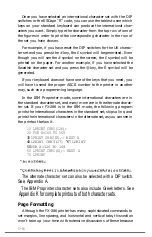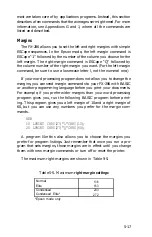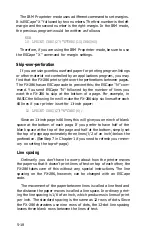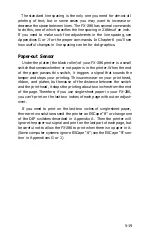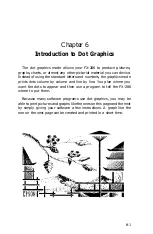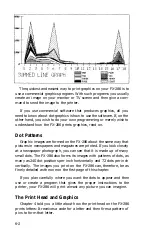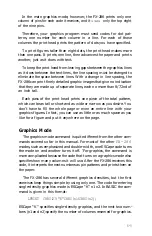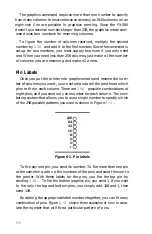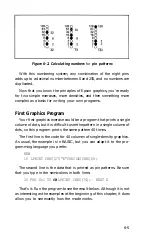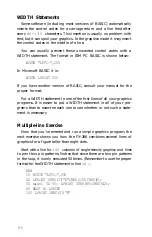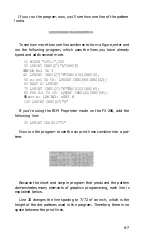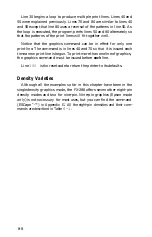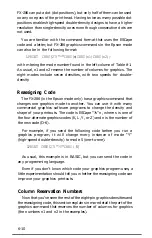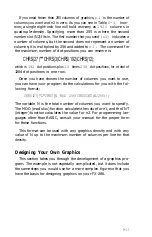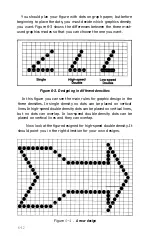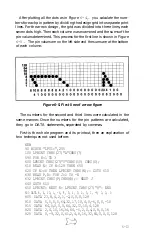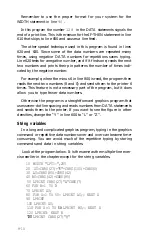
Figure 6-2. Calculating numbers
for
pin patterns
With this numbering system, any combination of the eight pins
adds up to a decimal number between 0 and 255, and no numbers are
duplicated.
Now that you know the principles of Epson graphics, you’re ready
for two simple exercises, more densities, and then something more
complex as a basis for writing your own programs.
First Graphics Program
Your first graphics exercise could be a program that prints a single
column of dots, but it is difficult to see the pattern in a single column of
dots, so this program prints the same pattern 40 times.
The first line is the code for 40 columns of single-density graphics.
As usual, the example is in BASIC, but you can adapt it to the pro-
gramming language you prefer.
NEW
10 LPRINT CHR$(27)"K"CHR$(40)CHR$(0);
The second line is the data that is printed as pin patterns. Be sure
that you type in the semicolons in both lines:
20 FOR X=1 TO
40:
LPRINT CHR$(74);: NEXT X
That’s it. Run the program to see the result below. Although it is not
as interesting as the examples at the beginning of this chapter, it does
allow you to see exactly how the mode works.
6-5
Содержание FX-286 - Impact Printer
Страница 1: ......
Страница 2: ......
Страница 35: ......
Страница 40: ...2 4 ...
Страница 48: ...3 8 ...
Страница 56: ...4 8 ...
Страница 91: ...6 16 ...
Страница 118: ...C 10 ...
Страница 133: ...Epson Mode Commands G 5 ...
Страница 134: ...G 6 ...
Страница 166: ...H 4 ...
Страница 173: ...International Character Width Table Roman characters Italic characters I 7 ...
Страница 174: ...I 8 ...
Страница 180: ...J 6 ...
Страница 181: ...IBM Proprinter Mode Commands J 7 ...
Страница 182: ...J 8 ...
Страница 202: ...J 28 ...
Страница 208: ...K 6 ...
Страница 216: ......
Страница 220: ...IBM Mode See Appendix J for detailed explanations of codes Character Width Pitch ...
Страница 221: ...Notes ...
Страница 223: ......

